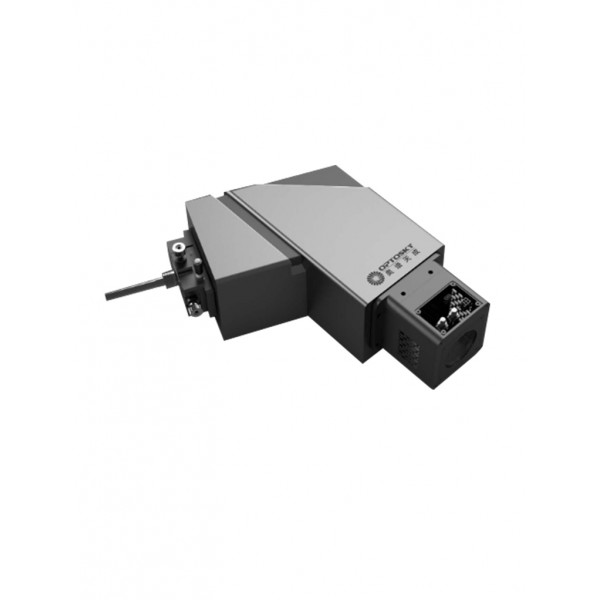ATP6750 high-sensitivity miniature spectrometer is a high-sensitivity, high-transmittance, spatial-resolution imaging spectrometer. It adopts a high-efficiency optical path and zero-aberration system design to make it have spatial resolution characteristics, and its sensitivity is 3 times stronger than that of conventional fiber optic spectrometers. It adopts ultra-large numerical aperture optical design, which can fully receive all the photons of the optical fiber (the numerical aperture is 0.22). It is especially suitable for the analysis of low-light signals, such as the imaging analysis of weak light such as gas analysis Raman spectral imager and fluorescence spectral imager.
ATP6750 adopts high-sensitivity deep-cooled back-illuminated CCD, which greatly reduces the noise of the sensor and obtains an excellent signal-to-noise ratio (about 2 times higher than that of similar competitors).
It outputs spectral data to a PC via USB 2.0. ATP6750 works with +12VDC power supply, the maximum current is about 4A.
Model | Features |
ATP6750P | Refrigerated UV Enhanced CCD, -10°C |
ATP6750R | Cooled Infrared Enhanced CCD, -10°C |
ATP6750LT | Deep cooling CCD, -30°C, 2048X506 |
ATP6750DC | Ultra-low temperature refrigeration CCD, -70°C, 2048X256 |
| Detector | |
| Detector type | ATP6750LT: Deep cooling, Ultra Low Noise Area Array Detector; ATP6750P: UV-Enhanced, Cooled Back-Illuminated Area Array Detector; ATP6750R: Infrared Enhanced, Cooled Back-Illuminated Area Array Detector; ATP6750DC: Ultra-low temperature cooled back-illuminated area detector |
| Spectral range | 185-1100 nm |
| Effective pixels | ATP6750LT: 2048×512 ATP6750P & ATP6750R: 2048×64 ATP6750DC: 2048×256 |
| Optical parameter | |
| Number of spatial bands | ATP6750LT: 512 ATP6750P & ATP6750R: 64 ATP6750DC: 256 |
| Focal distance | 60 mm for incidence / 60mm for output |
| Optical resolution | 0.1-3nm (depending on slit, spectral range) |
| Signal-to-noise | ATP6750LT: 13000:1 ATP6750P & ATP6750R: 50000:1 ATP6750DC: 33000:1 |
| Dynamic range | ATP6750LT: 13000:1 ATP6750P & ATP6750R: 50000:1 ATP6750DC: 33000:1 |
| Working temperature | -25 to +50℃ |
| Wavelength range | 185nm-1100nm(depending on the specific needs) |
| Slit Size | 50 μm, other sizes can be customized |
| Optical Design | Transmission grating optical path, F/1.2 |
| Optical path parameters | |
| Incident light interface | SMA905 fiber optic interface |
| Physical parameters | |
| Dimensions | ATP6750LT & ATP6750P & ATP6750R: 199×125×85 ATP6750DC: 287×165×100 |
| Weight | ATP6750LT & ATP6750P & ATP6750R: 1.2Kg ATP6750DC: 2.0Kg |
| Electrical parameter | |
| A/D conversion resolution | 18 bit (output 16 bit) |
| Power supply | DC12V |
| Integration time | ATP6750LT: 8ms - 1h ATP6750P & ATP6750R: 2ms - 15min ATP6750DC: 0.2ms - 1h |
| Interface | USB 2.0 (High speed) |
| Operating current | ATP6750LT: 3.0A ATP6750P & ATP6750R: 2.0A ATP6750DC: 5.0A |
| Storage temperature | -30°C to +70°C |
- Zero aberration transmission optical path design, high spatial resolution.
- The number of spatial channels is up to 506 channels.
- High sensitivity, high transmittance.
- Large numerical space, F-number is 1.2, can receive all incident light from optical fiber.
- Detector:Ultra-low temperature refrigeration detector.
- Detector pixels: 2048X264 pixels.
- 20-pin double-row programmable external expansion interface.
- Reflectance, transmittance detection
- Material Micro-Reflectance Spectroscopy Imaging
- Raman Spectroscopy Imaging
- Industrial Measurement Sensors
- LED Spectrophotometer
- Fluorescence spectral imaging









